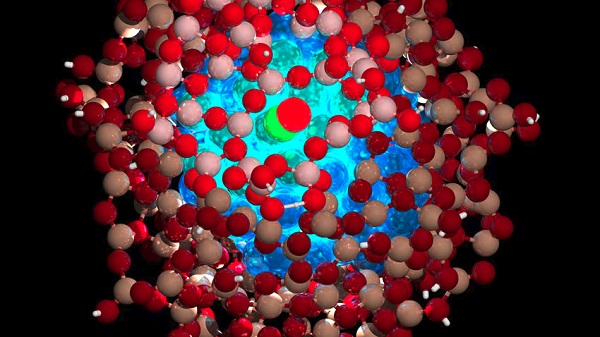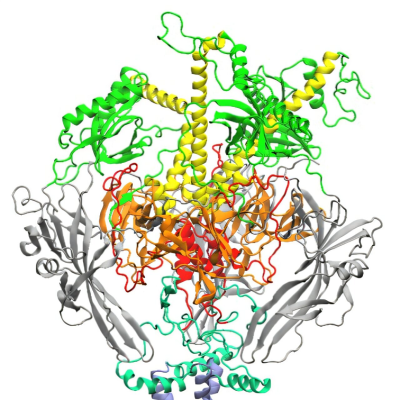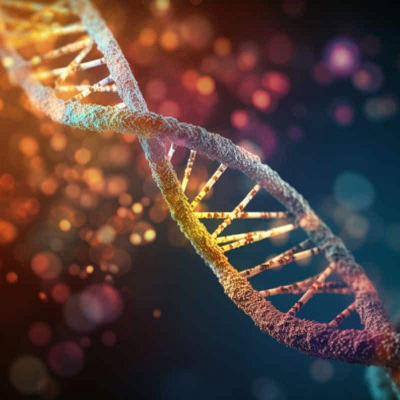“Chemotherapy can do one job in killing the tumor cells, but it has its limitations,” Song Li, M.D., Ph.D., told Fierce Biotech Research. “The tumor cells can do a lot of things to survive.”
Now, Li’s lab at the University of Pittsburg has learned how cancer cells use a key molecule to fend themselves against chemotherapy—and have come up with a way to target it directly. In a paper published Nov. 24 in Nature Nanotechnology, the researchers described how they developed a nanoparticle that co-delivers chemotherapy and immunotherapy together to block a protein called Xkr8. Mice who received the dual treatment saw their tumors shrink more than those who received either one alone, and they survived longer.

Scientists turned to nanoparticles, or tiny particles that are less than 100 nanometers in diameter, to deliver two therapies together.
“This work is highly translational, but it also helps advance our understanding of basic biology,” Li said.
The mechanism behind chemotherapy resistance centers on the lipid phosphatidylserine, or PS. In addition to other processes, PS in healthy cells is involved in apoptosis, or cell death. Under normal conditions, a cell is marked for destruction by the immune system when PS moves from the inside of the cell to the outside.
But cancer cells hijack this mechanism when they’re exposed to chemotherapy. The surviving cells move PS to the surface—but instead of marking them for destruction, PS in this instance keeps the immune system from destroying them. Even if most of the cancer cells are destroyed, the surviving cells can eventually lead to relapse.
Other researchers have tried to create antibodies against PS itself, and some drugs that inhibit the lipid are being studied in clinical trials in combination with other therapies. But because PS is involved in important processes in healthy cells, there’s a risk of serious side effects.
To make the therapy more specific, Li’s team wanted to see whether they could inhibit the mechanism from being initiated in cancer cells in the first place.
“We have to have a strategy to prevent PS from being exposed, because otherwise, you have to figure out how to neutralize all the PS,” Li explained. “But if we can have a strategy to prevent that from happening from the beginning, I think that will be more effective.”
To that end, the team looked to Xkr8, a molecule that regulates how much PS moves from inside the cell to its surface. Previous gene studies in cell lines had suggested that Xkr8 might be a therapeutic target, and initial experiments by Li’s team backed up those findings. When they treated cell lines with the common chemotherapy agents fluorouracil and oxoplatin, levels of Xkr8 shot up.
“That means that if you can use something to block Xkr8 when we give chemotherapy, you could effectively prevent [resistance] from happening,” Li said. His team created small interfering RNA (siRNA) that could halt the production of the Xkr8 protein, stopping the resistance process before it started. Paired with chemotherapy, “now we have a strategy to block this induction,” he said.
But that strategy required a vessel that could get the siRNA and chemotherapy molecules inside the cancer cell. For this, the scientists turned to nanoparticles, or tiny particles that are less than 100 nanometers in diameter.
This would hardly be the first time scientists had tried using nanoparticles to carry therapies into cancer cells, but previous approaches had some serious limitations. Most cancer-targeting nanoparticles have been designed to work by sliding into holes in poorly formed tumor blood vessels. Not all human tumors have blood vessels with holes that are large enough for the nanoparticles to fit, however, giving the therapy poor efficacy.
To get around this, Li’s team designed their nanoparticle so it could get into blood vessels without needing the holes. They covered its surface with the molecules chondroitin sulfate and PEG, which bind to a CD44 receptor that’s found both on tumor blood vessels and the cells themselves. When the molecules bind to the CD44 receptor, they’re carried inside, Li explained.
“This is just like a ferry that carries people from one side of the river to the other,” he said.
When the researchers injected the nanoparticles into mice with solid tumors, they found that about 10% of the particles made it to the tumor site. This was a significant improvement over other nanoparticles, which are cited as having a median delivery rate of around 1%.
Moreover, the Xkr8-inhibiting siRNA appeared to prevent PS-driven chemotherapy resistance. Levels of PS and molecules related to immunosuppression dropped in cancer cell lines that were treated with the therapy, and tumors in live mice grew about three times as slowly. The treatment worked even better when combined with the immune checkpoint inhibitor PD-1: More than half of mice with pancreatic and colon cancer who were given the loaded nanoparticles along with PD-1 lived for 180 days post treatment, compared with about 60% who lived to 30 days post treatment after receiving the nanoparticles alone. All of the untreated mice had died by around 20 days post treatment, according to figures from the study.
The scientists hope to translate their findings to the clinic, but first they’ll need to validate some of what they’ve seen so far. First, it will be important to establish that other chemotherapy drugs besides fluorouracil and oxoplatin induce the expression of Xkr8, work that is currently ongoing. There’s no guarantee that cells develop resistance to all chemotherapy agents the same way, Li pointed out.
“I will not be surprised if some drugs don’t induce Xkr8 expression,” he said. “Tumors are very smart—they may respond differently.”
Furthermore, while Li is confident that the nanoparticles will work in other species because they bind to the CD44, which is present in the tumors of most animals, he plans to run more experiments to be sure. The team will also need to check to make sure that targeting Xkr8 isn’t harmful to healthy tissue and that the nanoparticles aren’t toxic.
Still, the results are promising so far—particularly by how well the treatment performed when it was combined with PD-1.
“We achieved long-term survival in about 50%,” Li said. “I don’t think the tumor will come back in those mice. That data was quite encouraging.”
Read the original article on Fierce Biotech.







